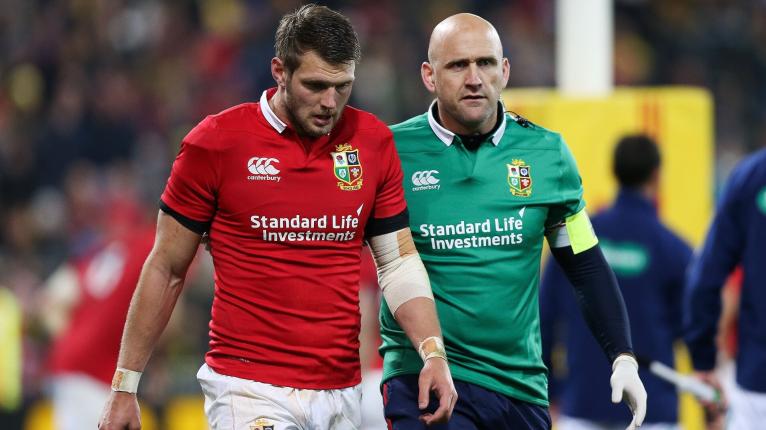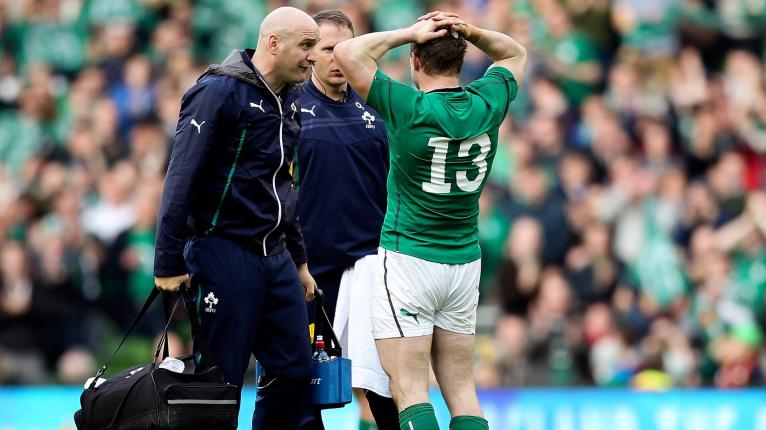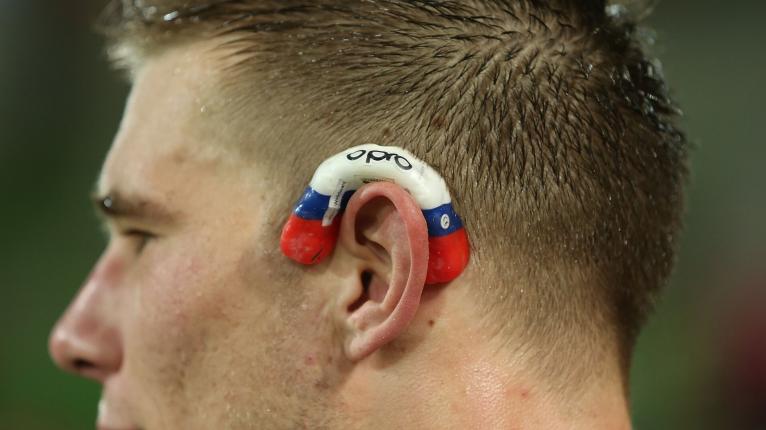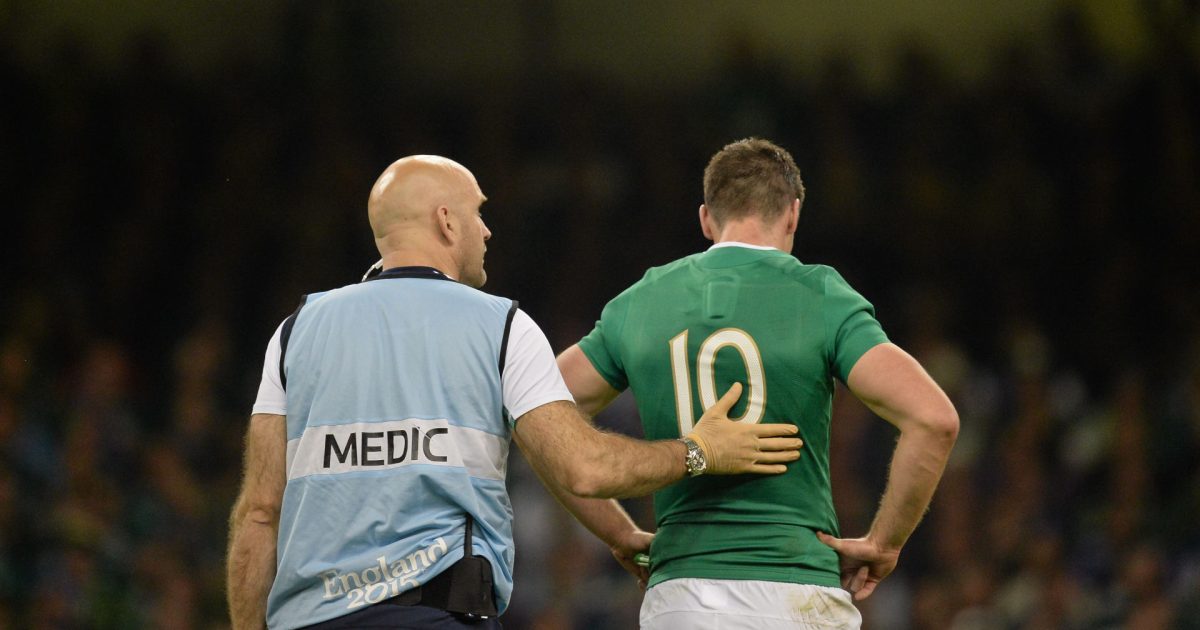'I'm less concerned with how the game looks and whether it's entertaining'

Dr Eanna Falvey has had two careers in sport where the main objectives are polar opposites. As a gifted heavyweight boxer, growing up in East Cork, he was talented enough to box at international level for Ireland, where for the uninitiated, the express aim in the ring is to rain repeated blows to the head and body until your opponent is forced into submission.
Nowadays, however, speaking to World Rugby’s Chief Medical officer at Cheshunt RFC, he explains his objective is nobler than the noble art, namely, to prevent rugby players from enduring concussions. “My sole remit is to cut down the number of times players get hit in the head. I’m less concerned with how the game looks and whether it’s an entertaining game. The best games for me are when no one gets hit in the head at all.”
Growing up in a hurling and GAA area, Falvey first got involved in rugby in 2003 with his home province Munster, where he was team doctor in the halcyon years where Munster picked up two Heineken Cups, and had generational talents, Ronan O’Gara and Paul O’Connell to attend to on the field of play.
With his pugilistic gifts, genial personality and medical background, respect from players came easily, and his ascent in the game over the next decade and a half was steady, as he progressed to work with the Ireland National team at two World Cups and the British & Irish Lions tours in 2013 and 2017, before taking up a role as deputy Chief Medical Officer in 2018, under Martin Raftery, before switching roles in January 2020.
Still working independently as a sports and exercise medicine consultant, Falvey’s complex role can be simplified. “I have a broad remit but fundamentally it’s making the game as safe as possible,” he smiles, earnestly.
Falvey says that while medics recognise it’s a contact sport, and the inherent risks associated with that, his job is to acknowledge that if people want to play contact sports, they have to make educated decisions. “The caveat is that we act in an evidence-based manner and use the data to drive those decisions. When you don’t have data, you tend to make emotive decisions which may not get the desired outcome. In medical terms, you’re using the ordered loop, which is to assess the problem, see what you’re going to do, implement the measure and then reassess again. That way, at least you’re moving the dial on. We want rugby to be in a format that encourages people to play at a young age.”
The leap in education and knowledge over the last two decades Falvey feels, has been transformational. “I still remember in one of my early games with Munster, having a player who had a clear concussion. He needed escorting off the pitch and the big debate came from the player and one of the coaches over whether he was fit to play on. That simply wouldn’t happen now.”
After getting involved in rugby in 2003, in an analogue world that was pre-smartphone and social media, Falvey says the landscape was quite different. “Like society in general, technology has moved everything on. There’s an awareness of things that weren’t even on the radar before. What was clubhouse talk is now out in the open. For me, the more dialogue we have about this, the better.”
Falvey is acutely aware of the heated debate around brain injury and player welfare that continues to rage around the game but says accusations of malpractice are wide of the mark. “I have to say, subsequently working with Ireland and the Lions, that I’ve never had a coach other than supportive of looking after a player’s welfare. We should be proud of how proactive the game is in looking after the people who play it.”

Fundamental to rugby’s duty of care is education and Falvey says that starts at the clubs, where the team physio and team doctors have the player’s trust. “Ultimately, they know these individuals are there to look after them. They’re not in it for the money but because they love the game and want to look after the players.”
As part of that education, player welfare standards were implemented by Martin Raftery when the HIA was first rolled out, which means every player who goes onto the pitch for a World Rugby tournament has to have a base level of education and knowledge around player care. In that piece is mental health education, concussion education and pitch-side management – that’s a huge step.”
One other key area, which has helped change the public mindset is having commentators in the media, usually ex-players, who have been through the HIA process and who can explain it in Layman’s terms through their own experiences. “When it started, we had ex-players commentating on games who knew very little about the process but still had a lot to say about it. When rugby fans hear messaging watching the big games, it filters down into the clubhouses up and down the country. If you hear a former star expressing his views to a huge television audience, that has serious clout in shaping the narrative.”
As rugby tries to manage its approach to lessening brain injury, and looks for answers through research, the reduction of live sessions in training and contact load are being scrutinised as never before. A fact Falvey accepts. “There is a lot of work going into contact load guidelines and we’ll have more conclusions in the near future. The days of training pitch punch-ups that many old-school rugby fans laughed about are nearing an end. The data from PRL and the RFU will move it on again. A utopia for us is a player getting an individualised approach to what the week will look like depending on their age, experience, concussion history. That’s the way it has to be, and we’re almost there.”
Falvey points to teams like Harlequins, as a good example of what can be achieved, even though they operate with reduced training load. “I’ve been told they do very little contact. Of course, they are very regimented in what they do, every session is organised and intense, but it’s getting the lower levels of the game to understand it’s not about knocking lumps out of each other at training Monday to Friday, it’s about having a real structure to what you’re doing and having a small dose of contact work.”

Other areas of fan frustration in how the game is evolving is lowering the tackle area, which has led to a steady flow of red cards, and angry discourse online. “No one wants to see players get red cards, but they understand that players have to look after one another. There was a time when people said, ‘that’s not dangerous, it’s just a bit reckless’, but if, for example, someone is penalised for speeding, we don’t talk about whether they’re a good or a bad person, we just look at the facts. I think the UK is leading the way on this.”
Falvey says they have clear data which points to the effectiveness lowering the tackle area, which is being written up as a paper. “If you reel this back to its most basic level, the analysis we have is if you tackle into the midriff, your risk of concussion is one but if you go above the shoulder, it’s six times higher. If you go down to the knee or lower, it’s four times higher, so clearly the sweet spot in the middle. This is a massive behavioural experiment. What you’re trying to do with the red card is change player and coach behaviour. We’re trying to get coaches to focus on tackling and the quality approach to it. My advice is if a player’s not sure, then don’t commit.”
One of the major challenges for Falvey and World Rugby, is monitoring contact sessions. One way is through Prevent’s instrumented mouthguards, which can relay key data back to an independent source, and the other is more traditional, by talking to Players Association’s dotted around the world. “We have ongoing dialogue with the Rugby Player’s associations and teams about what reduced contact means in reality. “I’ve heard people use the NFL example to this but their ultra-professional 32 teams are very tightly supervised, whereas we have 16 competitions alone using the HIA protocols. In terms of the practicalities there will be some leagues who can manage it and some that simply don’t have the resources.”
An area where rugby has seen visible changes is around the 12-day stand down, which came into effect this summer. Falvey says this is a step in the right direction, but for now, calls for it to increase further are premature. “We know that as the years have gone by, the length of time players are out of action is actually increasing We’ve had a number of calls about going back to the three-week stand down but we know from the data available to us, the players returning weren’t getting any structured return-to-play, which they are now.”
Another nuanced area of progress is the mild concussions that occur when a player has very few symptoms the next day. “You know, historically, after a bang and a small stumble, you’d carry on as if nothing had happened. Nowadays, you’ll come off the pitch, have an assessment and be told to stay off until you’ve been fully checked. If you then have no symptoms at all, there is a possibility they can return seven days later because we don’t have data to suggest they’re not. If that changes rugby will change with it.”

Falvey says a turning point has also been reached around player feedback. “Now players will rock up and say, ‘I don’t feel too hot’. A few years ago, it’s likely you wouldn’t have said a word. It would have been, ‘I’ll be grand, I can self-manage this,’ but we can’t manage a concussion we don’t know about. It doesn’t get much publicity, but one in five of our concussions presents after the game.”
Wrapped up in the player care conversation is the brain health side of rugby, which Falvey says is the next big frontier. “It’s for the active player who is worried, or about to retire, thinking ‘how am I going to pay the bills in five-year’s time?’ right through to the ex-player who is struggling 10 to 15 years after leaving the game. We want to help ex-players with a loss of status often comes issues with alcohol, drugs and gambling. We don’t want them becoming disenfranchised. Players go through a form of grief, it’s like they’ve lost part of their identity. We want to help them. If I’m dealing with a player who’s had an ACL injury, the biggest part you’re managing is loss. He’s away from the lads and you have more to manage in the mind than the body.”
Dealing with life post-rugby is a perennial issue for even the biggest of stars, with Brian O’Driscoll recently admitting to a feeling of loss at missing the roar of the crowd and craic in the changing room. Someone who is very clued up on this is former Cardiff Rugby and Wales backrow Andre Pretorius. “I remember something he said struck a chord with me. After I came back from the Lions in 2013, I’d spent 10 weeks with every minute managed. The first week I was back, I’m like, ‘where’s my day sheet? Who’s telling me what clothes I should be wearing. Where should I be at 10 o’clock. Imagine if you do that over 10 or 15 years. His point is, it’s no surprise you feel like garbage. That’s where the brain service really kicks in by looking at that group of people who have given so much to the game. They need looked after properly.”
What the brain health service looks like is still being refined, with a tool in development and software being readied. The hope is that by the New Year, a beta version will be ready to roll out. “We’re working with Professor Andrew Gardner from Australia and Grant L Iverson from Harvard University. In essence, you’ll do the survey online, which triages your risk level. It doesn’t make a diagnosis, but it points us in the right direction whether you need an assessment? That’s one of the few silver linings of Covid. If you’d asked psychologists 10 years ago, whether it could be done online, they’d have laughed at you – but we’ve shown we can do it. Being able to positively impact on a person’s quality of life is genuinely exciting.”
With the expanded stand down period, reduced tolerance for high-tackles and planned reduction in contact training, the sweet spot for games played in a calendar year is also under scrutiny. “If you look at the PRL data, the vast majority of players play far less than 30 games, but your high-demand guys like Owen Farrell are up around there. You obviously get the fans who say, ‘my player never plays for his club’ but it’s a balancing act, a tug-of-war. You also have to factor in that it’s a bi-modal curve because if you’re playing too few games – say less than 15 – your injury risk goes up as well. The group we get most pushback from is the players themselves, because they want to play. they want to earn their crust and they want to play in the big games. We want to take the individualised approach. The answer won’t be in a set number but in that bespoke approach. Good information doesn’t come easy.”
What Falvey says is frustrating for players is that there isn’t a clearcut answer that you’d expect that from modern medicine, so to improve communication, and to refresh our player welfare standards, he says an education piece has been prepared with input from Kat Marchant, George Gregan and Scotland’s Craig Ritchie on what is known right now about head impact events. “We recognise that we don’t want people getting hit in the head but when people do get hit in the head, we want to manage them properly when they occur. We need players to respect the process and look after themselves with our help, so informing them and updating our latest findings are key.”
Much work will be done at the Women’s World Cup next month in New Zealand, before France 2023 looms into view. “We’ve offered mouthguard instrumentation to all the teams and saliva testing. You could say the women are even more engaged than the men, in the nicest possible way – they have none of historical baggage of the men’s game. We have a Women’s player welfare working group with some big hitters on it like Rachel Burford. A lot of our data is driven by the professional game and when you haven’t had a professional women’s game for long, the data’s lower but we’ve made a commitment that whatever’s done in the men’s game, is done in the women’s game.”
As for what comes next, what has encouraged Falvey is the collaborative cross-sport conversations taking part. He thanks former World Rugby CMO Martin Raftery and the AFL’s Peter Harcourt, for setting up an annual collision sports consensus meeting in 2016, which has led to more defined work with US experts, including Bob Cantu and the NFL (National Football League). “Based on the work I’ve done with rugby I’ve been co-opted onto the NFL’s head, neck and spine committee and when an organisation with the financial clout they have regularly canvasses rugby for our opinion, it’s a huge compliment. I put it down to a very engaged player group that other sports don’t have. It gives us a real chance of a safer future.”





































